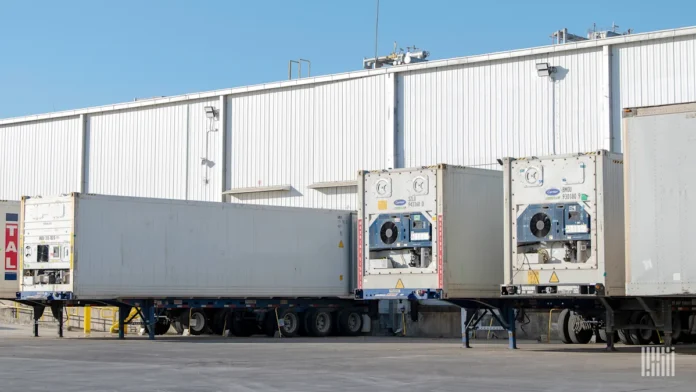When SciSafe announced the expansion of its biorepository network with a new facility in East Brunswick, it marked more than another win for the state’s thriving life sciences sector; it spotlighted New Jersey’s growing role as a cold storage powerhouse.
The facility, which adds five million cubic feet of capacity and hundreds of new cryogenic and ultra-low freezers, acknowledges the increasing demand for temperature-controlled storage driven by biopharma innovation, healthcare logistics, and proximity to one of the nation’s busiest transportation corridors.
For SciSafe, the decision to expand in New Jersey was strategic. The new site offers same-day cold chain fulfillment and sits close to I-95 and Newark Liberty International Airport, allowing for rapid and compliant movement of sensitive biologics and pharmaceuticals.
The facility’s Good Manufacturing Practice (GMP)-compliant infrastructure, advanced inventory visibility systems, and rigorous temperature monitoring protocols position it to support cutting-edge therapies like cell and gene treatments. Sectors that depend on storage precision measured in fractions of a degree.
While SciSafe’s announcement drew headlines, it’s part of a much larger trend. The Garden State is fast becoming one of the most competitive markets for cold storage development in the U.S., driven by its combination of scientific expertise, logistics advantages, and sustained industrial investment. According to Cushman & Wakefield’s Exploring the Future of Cold Storage report, rising consumer expectations, e-commerce grocery growth, and the globalization of pharmaceutical supply chains are fueling unprecedented demand for refrigerated and frozen warehousing.
Nationally, vacancy rates remain tight, and in many cases, new cold facilities are pre-leased before construction even begins.
Nowhere is this transformation more visible than in New Jersey. The state benefits from what Cushman & Wakefield describes as the “Three P’s” of cold storage site selection: Population, Production, and Ports.
With more than nine million residents and proximity to tens of millions more in the New York and Philadelphia metro areas, New Jersey offers direct access to dense consumer markets. It’s also home to a robust base of biopharma and life sciences companies, which have long relied on validated cold chain infrastructure for R&D and clinical trials. And perhaps most critically, it sits within a logistics network anchored by the Port of New York and New Jersey, one of the largest and busiest on the East Coast.
The Port Authority’s data show the scale of this gateway: over 7.8 million loaded containers passed through its terminals in 2023, a large share of which carried perishable or temperature-sensitive cargo.
These volumes create natural demand for nearby cold storage facilities that can handle cross-dock operations efficiently and maintain temperature integrity throughout multimodal transitions. New developments are clustering around port-adjacent industrial zones and major transportation arteries, shortening transfer times and improving energy efficiency.
The life sciences ecosystem has played a pivotal role in sustaining this growth. BioNJ, the state’s life sciences trade association, has championed policies and infrastructure that support biopharma expansion, from advanced manufacturing to AI-driven drug development. Its initiatives highlight the need for digital, data, and logistics resources that enable innovation, a framework that naturally extends to validated cold storage as a foundational capability.
Still, the surge in cold storage demand presents challenges. The sector is energy- and capital-intensive, requiring facilities with high power capacity, specialized insulation, and backup systems capable of maintaining constant temperature stability. According to Cushman & Wakefield’s analysis, a modern 200,000-square-foot cold storage facility can require several megawatts of power, putting its energy footprint on par with light manufacturing operations.
Limited land availability and complex zoning add further constraints, particularly in suburban industrial corridors. These barriers are driving developers to retrofit older facilities or pursue vertical warehouse designs that maximize efficiency within existing space.
As New Jersey’s cold storage footprint grows, so does the need for specialized talent, from quality assurance professionals and temperature mapping technicians to logistics planners skilled in cold chain validation. State agencies and educational institutions are beginning to respond with training programs aimed at building this expertise pipeline, ensuring that the region’s labor market evolves alongside its infrastructure.
In many ways, the rise of cold storage in New Jersey represents the convergence of two of its greatest strengths: logistics and life sciences. The state’s highway and port infrastructure make it a natural distribution hub, while its research institutions and biopharma base ensure constant demand for temperature-controlled capacity. The SciSafe expansion captures that intersection perfectly—a facility designed to handle today’s pharmaceutical storage needs while anticipating tomorrow’s scaling challenges.
The post Why New Jersey’s cold storage surge matters for logistics appeared first on FreightWaves.





